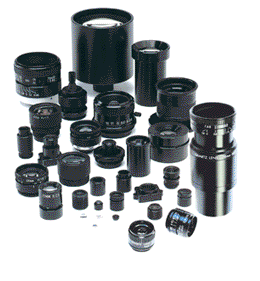High resolution lenses for machine vision — standard and custom lens design
How Do Laser Diodes Work?
High Resolution Lenses for machine vision, instrumentation, inspection and vibration-sensitive applications. Standard and custom hi-res lens assemblies.

Laser Diodes
Universe is a manufacturer of lenses for diode laser collimators, CD and DVD players, laser pointers, laser levels, laser surface inspection systems and positioning and measuring equipment. The company explains the science behind a laser diode in this way: a laser diode is similar to a light emitting diode (LED) in that it is comprised of a “junction between two semiconductors (one positive and one negative). The junction between the two semiconductors collects the electricity and transmits it to the lens which in turn, focuses the laser beam. Semiconductors are miniscule, made of thin slices of semiconducting material and are meticulously manufactured to create the perfect junction from which the light beam focuses.
A laser is monochromatic, which means it produces light on only one frequency. In order for a laser to function, there have to be multiple photons of light operating at the same frequency and all traveling in the same direction in order to amplify the light beam. The light is emitted from a laser diode because there are both “electrons and holes (the absence of electrons) in the negative substance.” Once the positive substance is charged the electrons housed in that positive substance will fill in the negative substance. It’s when the electrons “jump” between the substances that the photons are formed.
Photons that are produced simultaneously during this process will be of the same frequency and will move in the same direction and this is what causes the laser beam to form, focus and emit from the laser diode lens.
Laser diodes are most commonly seen in laser pointers as well as for use in remote control devices that operate DVD and CD players. These laser diodes don’t produce much power and this makes them ideal for home use, but not typically used in industrial settings.